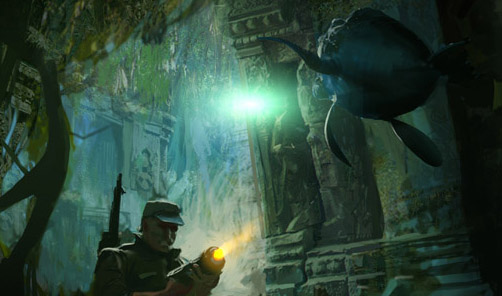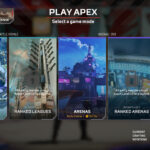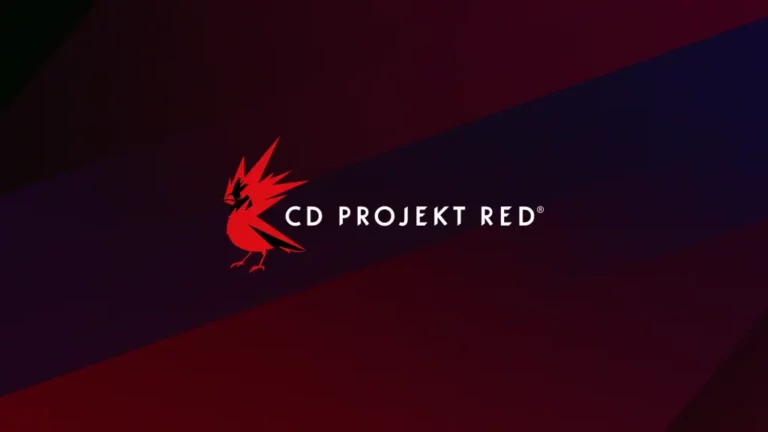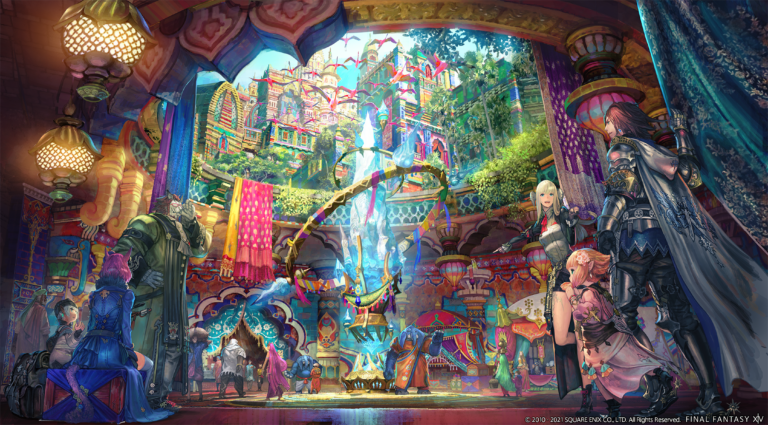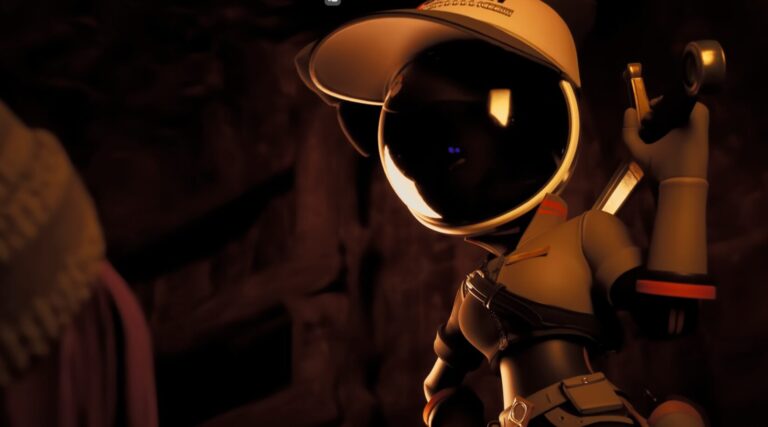Halo is not the prime universe in the Bungie world; Marathon is. Which may surprise some who first found Bungie either through ONI or Halo, but the core timeline for the entire series rests with one of their earlier games: Marathon and Pathways into Darkness.
Not only are these two games very important to the lore of both Halo and Destiny, but they’re also just as lore filled as those two games, if not more. Where Destiny has very little lore, PiD and Marathon have intense amounts of lore which to this day is studied and thought on.
I’d like to propose a simplified version of the Bungie Multiverse Mythos and a simplified Timeline below that walks through the major highlights and plot points that you’d otherwise have to dig around for. Most articles focus on easter eggs and lore tidbits, but I want to focus on what the overall story and theme of the multiverse is.
Do note, all franchises except PiD and Marathon are in their own universe / timeline. This has been confirmed by Bungie 2309843 times. Earth is Earth down the line, but how that makes sense is easy when you get to Marathon Infinity.
Finally this is an extreme oversimplification. If you want to dig deep into the Marathon lore, please visit Bungie.org which does an exhaustive job of covering Marathon and PiD.
Game Timeline
There is no timeline as none of the games exist in the same functional timeline. Each game series is its own timeline with deviations from the prime Marathon timeline. For instance, in Halo the AI isn’t Durandal but Cortana, another sword. In Halo you’ve got the same armor and many of the same weapons and even enemies from Marathon, everything is just a bit sideways. Then in Destiny you’ve got what feels like Pathways into Darkness walking backwards, but it’s all effectively the same world with just small differences spiraling into larger ones later on.
Below is the timelines and the timelines that they’re affixed to along with key plot points for the primary AI (Durandal) and main hero (the PiD player character).
If you want to play of the below games yourself, check out Aleph One. Bungie open-sourced Marathon and PiD, so Aleph One is the current best way to play.
Pathways into Darkness Timeline (Core Timeline)
The events of the Bungie Multiverse start with Pathways into Darkness. A spec-ops team is sent to stun an old God in the Yucatán Peninsula inside of a pyramid after the Jjaro contact the president. The player character’s parachute doesn’t work and they wake up in the forest with their team having already gone ahead. Entering into the pyramid, the player character speaks to the dead to find out what happened to a German Expedition, a Cuban Expedition and their own team.
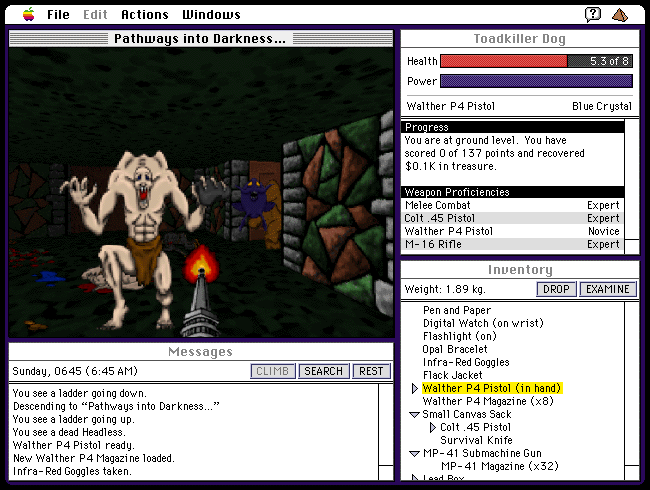
The canon ending is that the soldier (kinda unofficially named Sergeant Eddings) reaches the bottom, stuns the old God which is known as the (or later we’d probably say a) W’rkncacnter and makes it out alive, is recovered and the Jjaro deal with the old God inside of the temple.
There’s a few core details here to take note of. The pyramid is full of dreamed up enemies from this sleeping God; these enemies later show up in their non-dream form in the Marathon series. There is no death in the pyramid as well, your comrades who are dead can still speak with you and talk about how they’re slowly losing their memories.
Finally it’s assumed that the player character here is, in theory, the same player character in Marathon.
Marathon (Core Timeline)
Working off the last assumption and just completely spoiling Marathon 1, it’s found out that the player character is a Mjolnir Mark IV cyborg which is assumed to have organic components from the the Pathways into Darkness player character. This is from a log later in Marathon where the story from PiD is brought up on a console while you glitch out a bit.

Anyway the story for Marathon is massive and very hard to summarize. The key elements here is that there’s a colony ship built from a hollowed out moon that’s under attack by aliens. These aliens are very complicated and are not the Jjaro – they’re the Pfhor, along with the S’pht.
Your character makes it through the ship while several AIs onboard duke it out (Durandal being the victor). At the end, the ship is saved and Durandal takes the Pfhor ship and rides off into the sunset.
Marathon 2: Durandal (Core Timeline)
Here the player character is back, this time on Lh’owon the S’pht homeworld. Another story too big to properly summarize but it involves a lot to do with Durandal, the AI dying, coming back and then winning and humanity gets saved.

The note here is that it explains a lot of the connections back to PiD, why the God dreamed of enemies that appear in Marathon and just general lore for the Marathon series. It ends on a happy note and ultimately this is where Marathon finishes.
Marathon Infinity (Shattered Timeline)
The multiverse starts with Marathon Infinity. This sets up Halo and Destiny along with any other future Bungie games like ONI. Here, the Pfhor decide to wake up the W’rkncacnter that’s inside of Lh’owon’s star. This brings the main character through different timelines where different settings are at until they reach a Jjaro station that prevents the event.

The ending occurs billions of years later with a simple note from what we can only assume is the player, Durandal, Thoth hybrid which happens at the very end of the universe. The Marathon 2 ending clearly establishes that everything is fine in the core timeline, but this ending in Marathon Infinity is where Bungie unleashes…
Halo (Halo Timeline)
Halo is the retelling of Marathon, but in a timeline that has been shifted sideways slightly. In Marathon you played as Mjolnir Recon number 54, the tenth Mjolnir Mark IV cyborg assumed to be the resurrected soldier from Pathways into Darkness. The entire Marathon series was about Durandal figuring out how to defeat the end of the universe and, in many ways he has by being a never ending always respawning hero through time and space.
Enter Master Chief, John-117. A cyborg that starts in the Mjolnir Mark IV assault armor. This kicks off an entirely new universe that’s effectively a different timeline from Marathon/PiD. In Halo, the Jjaro are known as the forerunners. The flood is the unreleased fungal Pfhor horde. The rings (this story’s version of the W’rkncacnter) and the destruction they bring is aligned to the same destruction and threat in Marathon.
Master Chief: “Is it true?”
343 Guilty Spark: (pauses) “More or less. Technically, this installation’s pulse has a maximum effective radius of twenty-five thousand light years. But, once the others follow suit, this galaxy will be quite devoid of life, or at least any life with sufficient biomass to sustain the Flood.” (Pause) “But you already knew that… I mean, how couldn’t you?”
Cortana: “Left out that little detail, did he?”
343 Guilty Spark: “We have followed outbreak containment procedure to the letter. You were with me each step of the way, as we managed this crisis.”
Cortana: (alarmed) “Chief, I’m picking up movement!”
Level 8, Halo Combat Evolved – Fans commonly refer to this as confirmation of the “eternal warrior” theory.
Durandal returns as Cortana (the link being they’re both named after real legendary swords). Lots of weapons have the same or very similar names, like the Rocket Launcher and Flamethrower. The Marathon logo is everywhere until Halo 3: ODST when they got worried about copyrights with Microsoft.
So basically while there’s too much to go over in the Halo story, Master Chief is one version of the hero from Marathon in another timeline; confirmed at random intervals in the story.
Destiny (Destiny Timeline)
Destiny is another timeline but many theorize it’s Pathways into Darkness but in reverse (considering the launch trailer was called Pathways out of Darkness…). You’re a resurrected champion working for a dying God that is dreaming, which is very likely a W’rkncacnter while alien races race to rob it of its treasures and destroy it.
Many argue that it’s the literal reverse of Pathways into Darkness, with the Vex, Fallen, Cabal being the same as the explorers (the Germans, Cubans, Soldiers). The player character is a dream of a dying God and the ultimate villain of the story but I’m not very hype on it. The darkness being the JJaro doesn’t fit the theme and the Traveler is no longer dreaming and actively speaking to Guardians.
It feels more like Destiny is just another deviation from the original timeline. Durandal is a Ghost this time around and the hero’s spirit is your Guardian. The Traveler probably at the very end is a W’rkncacnter that’s plotting against Humanity. During The Witch Queen it’s found out that the Traveler wanted to be teleported away and gives high suspension that it’s not exactly 100% on Humanity’s side.
Which then makes me just ponder if the analogy this time is the Traveler is the Jjaro and the Darkness is the W’rkncacnter or if it’s the other way around. Many Guardians seem to be falling to the Darkness and are quick to accept its power and gifts when offered. The Traveler is bestowing the light to the Hive now. So it’s a bit of an interesting mess.
There’s a ton of connections back to Marathon/PiD here. The Midas Tool (Midas organization in Marathon) is the biggest one along with tons of connections to Dr. Straus, Tycho as an AI, etc.
So to me I think we’ll get an interesting story that can be related back to PiD and perhaps is the conclusion of the Marathon multiverse (starting where it ends with an inverse of PiD) but at the same time all of this can be overreading Easter eggs.
Overreading Easter Eggs
The final comment I’d like to have is that while there’s pretty much solid confirmation down the line that every Bungie game is related; I have to push back on getting too excited about it. The Marathon logo being slapped everywhere is confirmation enough that everything is related.
At the same time, I think it would be more fun if Bungie aggressively did something to tie all the games together and bring Marathon, Destiny and Halo together in some really cool big way.
ONI (ONI Timeline)
ONI was made by Bungie West and so it isn’t as well connected. There’s Easter eggs between Halo and ONI, but eh I wouldn’t consider it too much in-line with the Marathon-verse.
Eternal Warrior Theory
The common fan hypothesis for the Marathon/Halo/Destiny hero is the Eternal Warrior theory. It’s effectively what is surmised above, but I figure I’d mention it a bit more. It’s basically focused on the idea that the cyborg or resurrected soldier at the start of each of these games is the Eternal Warrior that’s basically the core story of every Bungie game ever.
Well that’s it for our exploration of the Destiny Multiverse Mythos. I hope you had fun and come up with your own theories about how all of this connects together!

